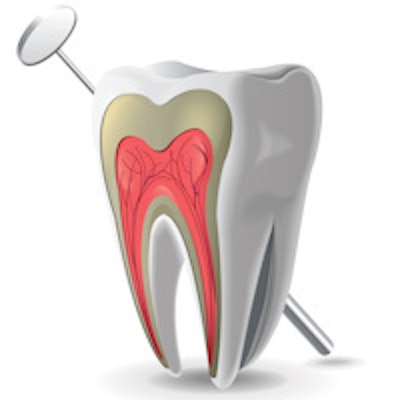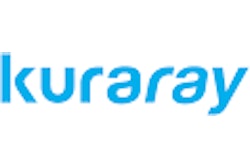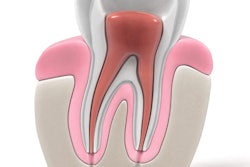
A newly developed resin core material appears to be stronger than existing dual-cure composites, according to a study in Dental Materials Journal. The material showed sufficient bond strength with both light and dark curing.
“TDK-03 might be an effective alternative to conventional composite resin cores.”
A team of researchers from Japan and Canada tested the new material, TDK-03 (Tokuyama Dental), against two other commercial composites. They initially believed there would be no difference between TDK-03 and conventional materials, but were surprised when the new material outperformed the others (Dent Mater J, 2016, Vol. 35:3, pp. 386-391).
"In this study, a newly developed resin core composite TDK-03 showed better bond performance in comparison with conventional ones," the authors wrote. "TDK-03 might be an effective alternative to conventional composite resin cores."
Testing the new composite
Dual-cure systems were developed to help prevent uncured core materials in deeper parts of cavities, but they tend to not bond well to adhesives. The researchers wanted to see if a new system that contained two bottle adhesives, in addition to a multifunctional monomer, would produce stronger bonds.
TDK-03 contains tributyl boran as a catalyst and a 3D self-reinforcing monomer. The researchers wanted to see how the strength of TDK-03 compared with two commercial resin core systems: Clearfil DC Core Automix One (Kuraray Noritake Dental) and UniFil Core EM (GC).
The researchers used 30 extracted human molars to evaluate the strength of each material. Fifteen teeth were cured under normal light, while 15 were cured in a photo dark room. After curing, the researchers tested the microtensile bond strength (µTBS) and failure patterns for each material.
| Microtensile bond strength by material | ||
| Material | Mean µTBS | Standard deviation (µTBS) |
| TDK-03 cured in light | 60.0 | 17.1 |
| TDK-03 cured in dark | 54.6 | 17.7 |
| Clearfil DC Core Automix One cured in light | 38.2 | 13.7 |
| Clearfil DC Core Automix One cured in dark | 8.3 | 4.8 |
| UniFil Core EM cured in light | 29.5 | 9.7 |
| UniFil Core EM cured in dark | 9.5 | 6.6 |
TDK-03 had significantly higher bond strength than both Clearfil DC Core Automix One and UniFil Core EM, the researchers found. They attributed this to TD's composition.
Self-reinforcing monomer is multifunctional, so the formed polymer after polymerization has strong 3D structures, the study authors wrote. "As the monomer has several phosphoric groups, they could chemically interact with calcium contained in the tooth structures," they added.
While the commercial composites were significantly stronger when cured in normal light than in the photo dark room, the amount of light had no statistically significant difference in the strength of TDK-03. The researchers believed this was because of the borate catalyst in the material.
The catalyst could effectively polymerize the adhesive without light activation, possibly resulting in good bond performance, the authors noted. In clinical situations, this could be advantageous when used for core buildup in the deeper part of the tooth.
Potential for clinical relevance
The authors hope other researchers will continue to test TDK-03, particularly looking at its long-term durability. They also would like to see future in vivo studies in human teeth.
Furthermore, the researchers are interested in TDK-03's relevance for clinical use. They believe it may be useful for other resin restorative materials, particularly when it comes to root canals.
"This system might have a potential to adhere perfectly to several materials, such as resin composites for restoration, resin core materials, and adhesive resin cements," the authors wrote. "The future studies should be performed in [a] more clinical relevant situation. ... The influence of the bond performance with root canal dentin and degree of conversion should be considered."



















